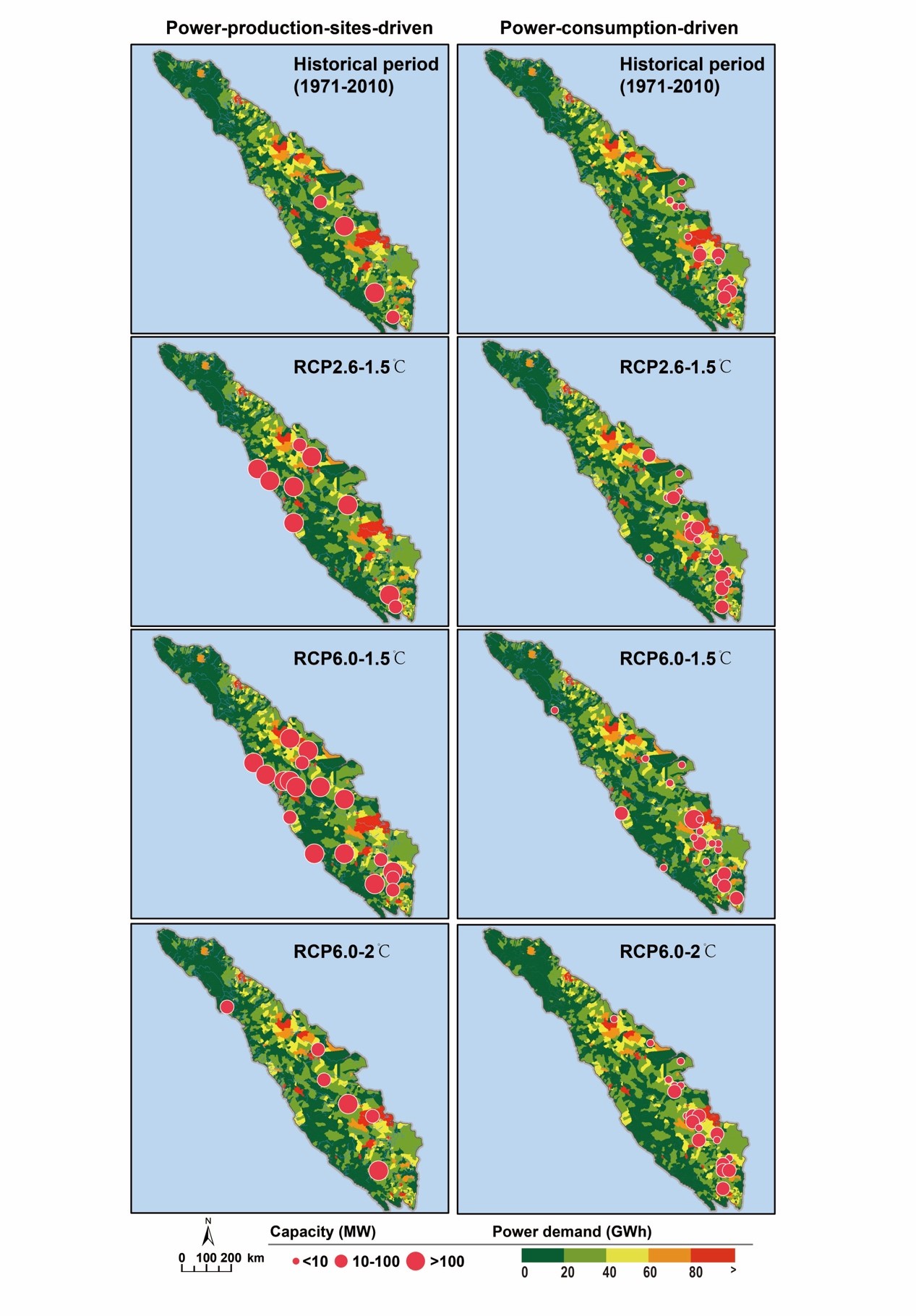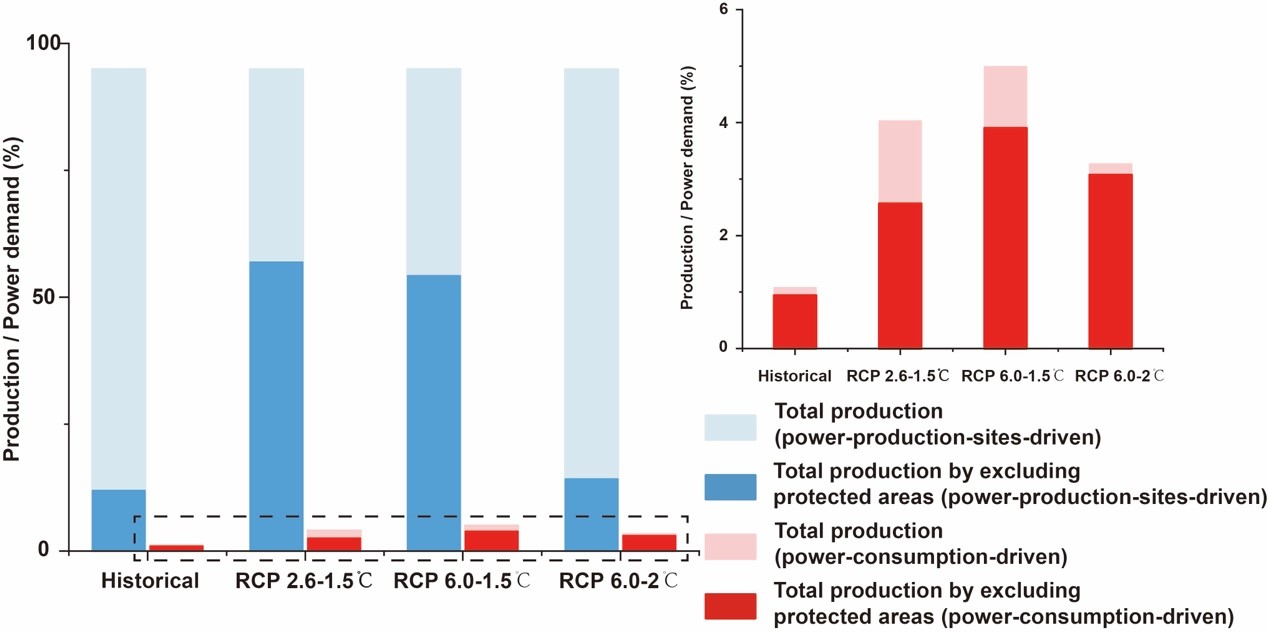A manuscript prepared by Prof. Junguo Liu’s group entitled “Hydropower production benefits more from 1.5°C than 2°C climate scenario” was recently accepted by Water Resources Research, a top journal in the field of water resources. The study was leading by Prof. Junguo Liu’s group and cooperated with International Institute for Applied Systems Analysis (IIASA). This study used a coupled hydrological and techno-economic model framework to assess hydropower production under global warming levels of 1.5°C and 2°C, while also considered gross hydropower potential, power consumption and economic factors. The results show that both global warming levels will have a positive impact on the hydropower production of a tropical island (Sumatra) relative to the historical period, however, the ratio of hydropower production versus power demand provided by 1.5°C of global warming is greater than that provided by 2°C of global warming under RCP6.0. In addition, the reduction in CO2 emissions under global warming of 1.5°C is greater than that under global warming of 2°C, which reveals that global warming decreases the benefits necessary to relieve global warming levels.
Hydropower plays an important role as renewable and clean energy in the world’s overall energy supply. Electricity generation from hydropower represented approximately 16.6% of the world's total electricity and 70% of all renewable electricity in 2015. Determining the different effects of 1.5°C and 2°C of global warming has become a hot spot in water resources research. This study investigated the influences of global warming levels of 1.5°C and 2°C on hydropower production in Sumatra, one of the Sunda Islands of western Indonesia, considering gross hydropower potential, power consumption and economic factors. The study modeled and visualized optimal locations of hydropower plants and discussed hydropower production based on select hydropower plants and the reduction in carbon emission by using hydropower instead of fossil fuels. This study could significantly contribute to establishing a basis for decision making on energy security under 1.5°C and 2°C global warming scenarios.

Figure 1. Optimal sites for hydropower plants outside protected areas driven by the power production sites and power demand under different global warming scenarios

Figure 2. Generation of potential hydropower plants under the historical period and under the RCP2.6-1.5℃, RCP6.0-1.5℃ and RCP6.0-2℃ scenarios
This work is supported by a Strategic Priority Research Program of the Chinese Academy of Sciences (Climate and Water Resources in Great Rivers Region in Southeast and South Asia). The project launched on 30 September 2018, acting towards the environmental development of the Belt and Road Initiative. It addresses the key environmental issues throughout Southeast and South Asia, with a focus on regional climate and water variability and change in the Lancang-Mekong River Basin. The project investigates both current and future climate change scenarios to understand the historical evolution and future of water resources in Southeast and South Asia. It mainly aims at explaining the natural and human driving mechanisms behind changes in water resource use. This knowledge will provide the scientific background and technical support to ensure water security throughout Southeast and South Asia.
The paper is available at the website of Water Resources Research https://agupubs.onlinelibrary.wiley.com/doi/abs/10.1029/2019WR025519?af=R
Water Resources Research is a top international journal in the field of hydrology and water resources. The journal publishes original research articles and commentaries on hydrology, water resources, and the social sciences of water that provide a broad understanding of the role of water in Earth’s system.